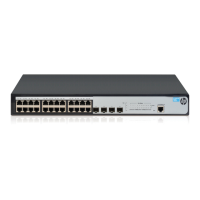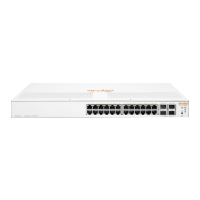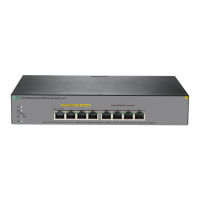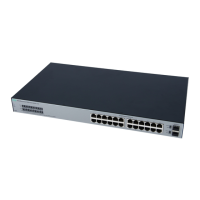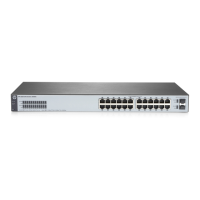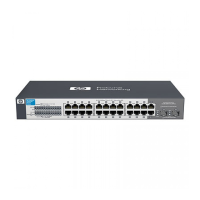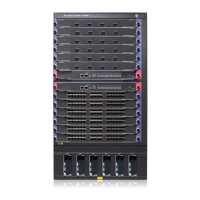218
Configuring link aggregation and LACP
Overview
Ethernet link aggregation bundles multiple physical Ethernet links into one logical link, called an
aggregate link. Link aggregation has the following benefits:
• Increased bandwidth beyond the limits of any single link. In an aggregate link, traffic is distributed
across the member ports.
• Improved link reliability. The member ports dynamically back up one another. When a member
port fails, its traffic is automatically switched to other member ports.
Basic concepts
Aggregation group, member port, and aggregate interface
Link aggregation is implemented through link aggregation groups. An aggregation group is a group of
Ethernet interfaces bundled together, which are called member ports of the aggregation group. For each
aggregation group, a logical interface (called an aggregate interface) is created.
Aggregation states of the member ports in an aggregation group
A member port in an aggregation group can be in either of the following states:
• Selected—A Selected port can forward user traffic.
• Unselected—An Unselected port cannot forward user traffic.
The port rate of an aggregate interface equals the total rate of its member ports in Selected state, and its
duplex mode is the same as that of the selected member ports.
For more information about the states of member ports in an aggregation group, see "Static aggregation
mode" and "Dynamic aggregation mode."
LACP
The Link Aggregation Control Protocol (LACP) is defined in IEEE 802.3ad. It uses link aggregation control
protocol data units (LACPDUs) to exchange information between LACP-enabled devices.
LACP is automatically enabled on member ports in a dynamic aggregation group. For information about
dynamic aggregation groups, see "Dynamic aggregation mode."
An LACP-enabled port sends
LACPDUs to notify the remote system (the partner) of its system LACP priority, system MAC address, LACP
port priority, port number, and operational key. Upon receiving an LACPDU, the peer port compares the
received information with the information received on other member ports. In this way, the two systems
reach an agreement on which link aggregation member ports are placed in Selected state.
Operational key
When aggregating ports, link aggregation control automatically assigns each port an operational key
based on port attributes, including the port rate, duplex mode, and link state configuration.
In an aggregation group, all Selected ports are assigned the same operational key.
